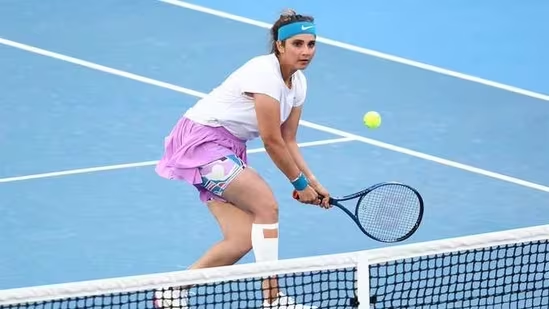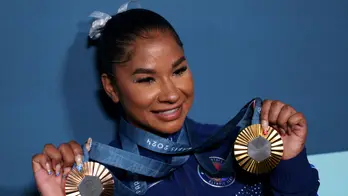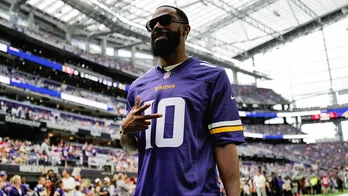How Sania Mirza inspired a generation of women athletes
There’s an oft-repeated line from Sania Mirza, says Ankita Raina, that “has stayed with me”. Mirza, to paraphrase, mentions that even if one girl or woman in India is inspired by her journey, she would feel content.

One?
How about wrestler Vinesh Phogat, who’d tweeted thanking Mirza “for teaching an entire generation of young Indian girls how to dream, I was one of them”? How about cricketer Smriti Mandhana, who called her an “inspiration for many to pick up a sport and champion it”? How about an entire generation of tennis players in India, especially women, who picked up a racquet after Mirza laid down the marker?
Ask Raina, 30, India’s current top singles pro. Or Aishwarya Jadhav, the 14-year-old from Kolhapur who was the India No 1 in her age group last year. Or Lenien Jamir, the 21-year-old from Nagaland currently playing US collegiate tennis for Monmouth University for whom Mirza was a "huge role model". Or the countless other Indian female players plying on the various circuits with the mental image of Mirza shattering norms with that cracking forehand.
Growing up in a middle-class family in Ahmedabad, a 12-year-old Raina vividly remembers the news flash from 2005 on her TV: Sania Mirza vs Serena Williams at the Australian Open.
"It was a big thing for Indian tennis,” Raina says. “At that point I wasn’t aware of the kind of challenges she had been through to get there, but what I picked up watching that news was that I too wanted to play in that arena one day.
“Just the fact that she was No 1 in the country, and truly the very best, inspired me.”
Jadhav wasn’t born when that match was played, having had to rely on YouTube videos to watch her two idols share the court. The first time the young girl from a small town heard of Mirza’s name was through an innocent question to her father when she'd just started playing tennis. “I asked him who from India plays this sport. He said, ‘Sania Mirza. She is the only one who has achieved so much in singles and doubles’,” Jadhav recalls.
The only one, till date. No singles player from India, female or male, has gone close to Mirza’s 2007 career-high singles ranking of world No 27 since. No singles female player from India has competed in a Grand Slam main draw since Mirza at the 2012 Australian Open.
Not that Mirza is a lone ranger in Indian tennis. In 2012, upon Mirza's suggestion, the All India Tennis Association brought the prize money of the women's singles national champion on par with the men's singles winner, a precedent still followed at the Fenesta Open Nationals. Earlier this month in Dubai, she had hitting sessions with Indian pro Karman Kaur Thandi and junior Yuvan Nandal.
A couple of years ago when national lockdowns crippled travel, Mirza asked Raina - her Tokyo Olympics doubles partner - to remain in Dubai, stay at her place and train with her before India’s Billie Jean King Cup World Group play-offs tie in Latvia (the two had won the key deciding tie in 2020 to get India that spot for the first time ever).
“It was so kind of her to invite me then,” Raina says. “I saw a completely different side of her at home. She's so chill and funny, and she’s got great humour. Just seeing how she is with everyone at home was heart-warming, and getting to spend that kind of time with her was a memorable experience.”
Also left richer with experience was Jadhav after her visits to the Sania Mirza Tennis Academy in Hyderabad for domestic tournaments. Mirza would not be around, but her mother often turned tale-teller. "She would tell us stories about Sania’s struggles when she was young and how she overcame lack of facilities and rose through such challenges," Jadhav says.
Jamir picked up the sport growing up in Mokokchung, Nagaland, and surrounded by people asking her "if I was going to be the next Sania". Limited tennis facilities in Nagaland forced her to shift to Assam, for which she was the U-16 and U-18 state No 2 before taking up the scholarship in the New Jersey university. "Even if people in the NorthEast did not know much about tennis, they surely knew Sania and equated tennis with her," Jamir says. "She’s had such a great influence on Indian tennis that her name is basically synonymous with the sport."
Jadhav played a junior tournament at Wimbledon last year, on the same greens where Mirza lifted the 2015 doubles title. The Kolhapur kid hasn't met Mirza yet, but hopes to soon. “I have always wondered how she managed when she was young and did not have the facilities that we do now. I want to ask her that,” she says.
It’s the kind of conversations Mirza is looking forward to having with Indian female athletes in her post-professional tennis life. It’s also why she agreed to take on the mentorship role of the Royal Challengers Bangalore (RCB) franchise in the Women’s Premier League.
“When this conversation with RCB came up, I’ve watched a lot of cricket and it’s in my family, but I know nothing about the sport. They said that’s not what we want you for; the kind of pressure you’ve faced in the last 20 years, we want you to help these girls cope with the sudden spotlight they’ve been put under. I thought, well, that’s something right up my alley," Mirza says.
“I want to help the next generation of athletes, particularly young women athletes, because I think male athletes have a lot of people to look up to.”
Mirza, the outstanding tennis player and outspoken person, stands a tall figure in that small sample for the former.
“Sania brought India on the world map, and not just in tennis,” Raina says. “She gave Indian women the belief that we can take on the world and also made Indian women players believe that we can perform at the highest level.”
“Going forward,” Jadhav says, “I too want to try and be like Sania.”
Disclaimer: The copyright of this article belongs to the original author. Reposting this article is solely for the purpose of information dissemination and does not constitute any investment advice. If there is any infringement, please contact us immediately. We will make corrections or deletions as necessary. Thank you.







